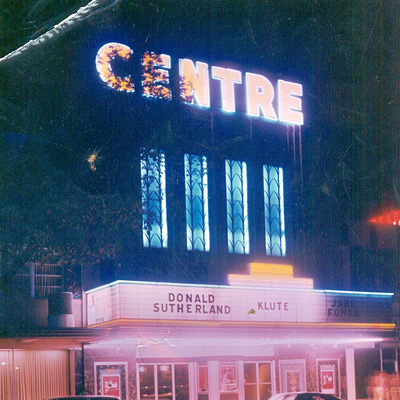While every bit the name-brand icon in the genre as your John Carpenter or George A. Romero, the Italian director is a master visualist whose work is built upon unusual angles and a color palette so vibrant, it doesn’t look real.
From 1980, "Inferno" is as good an example as any. A loose sequel to his 1977 masterpiece, "Suspiria," this thematic follow-up is sure to put a smile on any Argento follower's face in its opening minutes, when a New York City apartment building's exterior throbs in near-neon reds and blues, somehow creepier and more unsettling than the mystery of the dark night sky behind it. And it looks gorgeous on Blue Underground's new Blu-ray disc.
Story is secondary in Argento's films, if even that. They're all about atmosphere, and here, a majority of the scenes unfolds without words, at a pace that's purposefully slow, rather than frustratingly so. Admittedly not all that lucid, the premise is that the building is one of three structures — the others in Rome and Germany — constructed for three evil sisters by an architect named Varelli.
This morbid history is all laid out in his book, "The Three Mothers," discovered on the shelf by a single woman Rose (Irene Miracle), and later by her brother, Mark (Leigh McCloskey), who comes to visit. Without spoiling the details, Weird Shit happens involving cats, rats, ants and an array of razor-sharp implements.
Again, "Inferno" isn't so much focused on the what, but the how, and Argento pulls off some doozies. Worry not why Rose wouldn't think twice about diving into a hole of water she discovers in the building's basement; just enjoy the dreamy look of her surroundings and the shocking-cum-comic payoff. Several others are jerry-rigged into the script, all dancing along the line of real, unreal and surreal. While your brain may want to question motivation and seek reason, your glued, enraptured eyes prevent that.
As with "Suspiria," much of the movie feels threatening and ominous, even when nothing of the sort is at play. Through his sets; his creepy characters; and his choice of operatic, electro-rock scores (Keith Emerson here, subbing for the much-missed Goblin), Argento pulls viewers' nerves as tight as a garrote, and plucks it all the while. The climax utilizes an effects shot that's both unexpected and fantastic, the stuff of Argento devotees' bad dreams.
In an all-too-brief introduction to the picture, the director makes reference to "Inferno" being a troubled production for him, but shy of a feature-length commentary, we don't get many details. He and collaborator Lamberto Bava appear for on-camera interviews among the extras, as do the two stars; Argento and Bava mostly discuss (in Italian) the complexity of certain scenes, while McCloskey and Miracle talk about their entire acting career, not limiting their recollections to this one project.
And what a project! —Rod Lott










